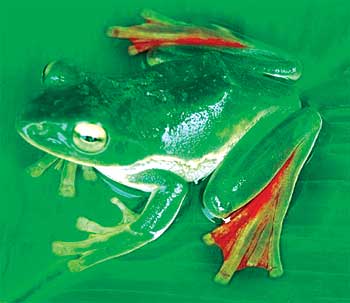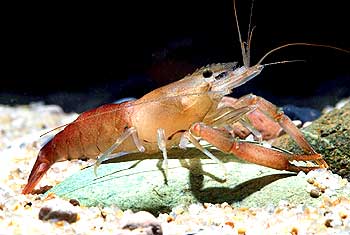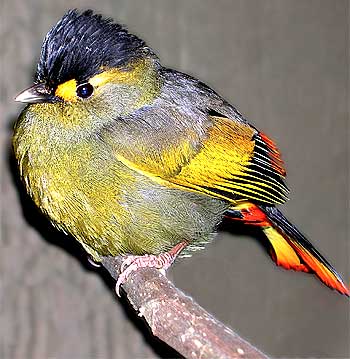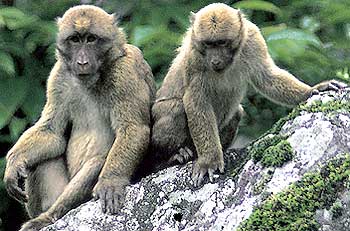Photographs: World Wildlife Fund
It is an accepted fact that the Eastern Himalayan region is one of the biologically richest areas on earth.
And over the decade, World Wildlife Fund researchers have discovered at least 353 new species in the region, spanning India's northeastern states of Arunachal Pradesh, Assam, Sikkim and parts of West Bengal along with Myanmar, Nepal and southern Tibet.
According to the WWF, a science-based organisation engaged in wildlife and nature conservation, India has a lot to celebrate from this report as 144 of these species were discovered here.
Ever seen a flying frog or Zaw's wolf snake?
Image: The Flying FrogPhotographs: Tutul Bortamuli
A new report compiled by the WWF titled 'Eastern Himalayas -- Where the Worlds Collide' mentions the discovery 244 plants, 16 amphibians, 16 reptiles, 14 fish, 2 birds, 2 mammals and at least 60 new invertebrates.
The Rhacophorus suffry, a bright green, red-footed tree frog, was discovered in 2007. It is known to glide or 'fly' from one tree to another.
The long webbed feet allow the species to glide when falling, was described in 2007. The species is mainly found in swampy areas and is known only from five specific sites, including the Suffry tea estate in Assam, where it was originally found, and in neighbouring areas.
Ever seen a flying frog or Zaw's wolf snake?
Image: The Leptobrachium SmithiPhotographs: Milivoje Kravac
Eight of the 16 species of amphibians discovered in the Eastern Himalayas in the past decade are from India's northeast.
Philautus sahai, a highly endemic frog, was described in 2006 from specimens found in 1988 in a single tree hollow, on the bank of River Noa Dihing in Arunachal Pradesh.
Very little is known about the species and there has been no more information about it, indicating this elusive frog may be extremely rare.
Ever seen a flying frog or Zaw's wolf snake?
Image: The ornamental shrimpPhotographs: Werner Klotz
In 2008, a medium sized new species of freshwater prawn Macrobrachium agwi was described from Cooch Behar in northern West Bengal.
With its tinted reddish-brown colour, the medium sized new species Macrobrachium agwi is now categorised as an 'ornamental shrimp' in the aquarium trade
Ever seen a flying frog or Zaw's wolf snake?
Image: The Bugun LiocichlaPhotographs: Ramana Athreya
Astrophysicist Ramana Athreya described the new species, which predominantly inhabits open-canopied, degraded hill forests with dense shrubs and small trees that remain after logging.
So far it is known to be restricted to 2 sq km at an altitude of between 2,000m and 2,350m.
Ever seen a flying frog or Zaw's wolf snake?
Image: The orange-spotted snakehead fishPhotographs: Anders Lindersson
The fairly large species, Channa aurantimaculata or Orange-spotted snakehead fish, is endemic to the forest streams, ponds, and swamps adjacent to the Brahmaputra river in the subtropical rainforest of northern Assam.
The species is remarkably striking, with a vibrant pattern of purple and orange adorning the length of its body. Discovered in 2000, and measuring up to 40cm in length, the fish is also known as the 'orange-spotted snakehead', as its head looks like that of a snake.
It is carnivorous and predatory, enjoying a diet of smaller fish and invertebrates.
Ever seen a flying frog or Zaw's wolf snake?
Image: The Macaca MunzalaPhotographs: Anindya Sinha
Biological expeditions in this biodiversity hotspot resulted in the discovery of the Arunachal macaque Macaca munzala, a primate new to science, in the high altitudes of western Arunachal Pradesh.
Described as a new species in 2005, the relatively large brown primate with a short tail was a significant discovery as, at the time, it represented the first new monkey species identified anywhere in the world in over a century.
The newly described macaque species is stocky in build and has a darker face than other closely related species. The new species is also one of the highest-dwelling primates in the world, and certainly of all macaques, occurring between 1,600m and 3,500m above sea level.
Ever seen a flying frog or Zaw's wolf snake?
Image: The Lycodon ZawiPhotographs: Samraat Pawar
Lycodon zawi or Zaw's wolf snake, was discovered dwelling in forests and near streams at elevations of less than 500m high in Assam, India, including in the Garbhange Reserve Forest and in northern Myanmar.
The black snake, with white bands, can grow to half a metre in length, and feeds mainly on geckos. The find increases the diversity of the Lycodon genus to four in Myanmar and to five in northeast India.
The WWF observes that although, on one hand, the discoveries in the last decade highlight the importance and richness of the Eastern Himalayas, on the other hand they also remind us of the urgent need to protect this magnificent part of the world.
Ever seen a flying frog or Zaw's wolf snake?
Image: The Calanthe YuksomnensisPhotographs: Sudhizong Lucksom
Of the 242 species of plants discovered, nearly half -- 120 are found in India.
Continuing with its reputation of being 'orchid capital of the world', a quarter of the 21 new orchid species discovered in the Eastern Himalayas were found in Sikkim.
On the flip side, the WWF says that destruction of original habitats has not left India untouched. Of the 163 species considered as globally threatened in Eastern Himalayas, 146 (90 %) are from northeast India, including 70 species that are found no where else on earth,' it said in a statement.
However, there are more such species waiting to be discovered.










article